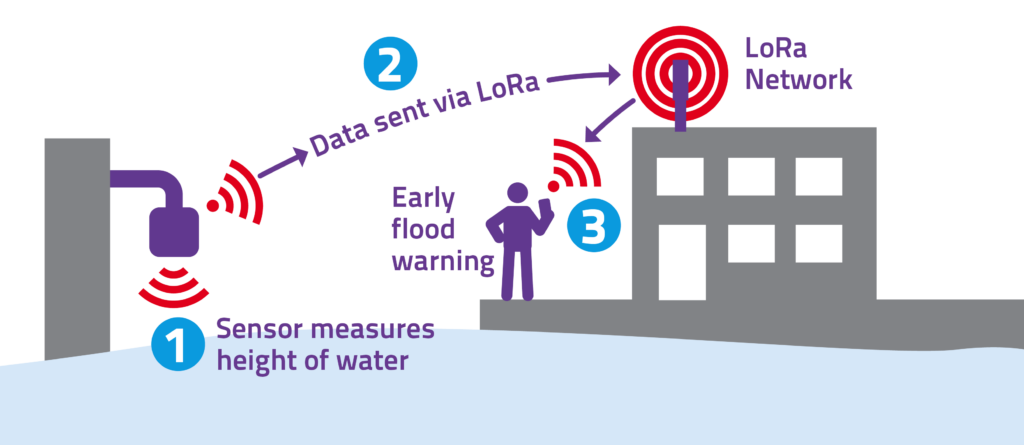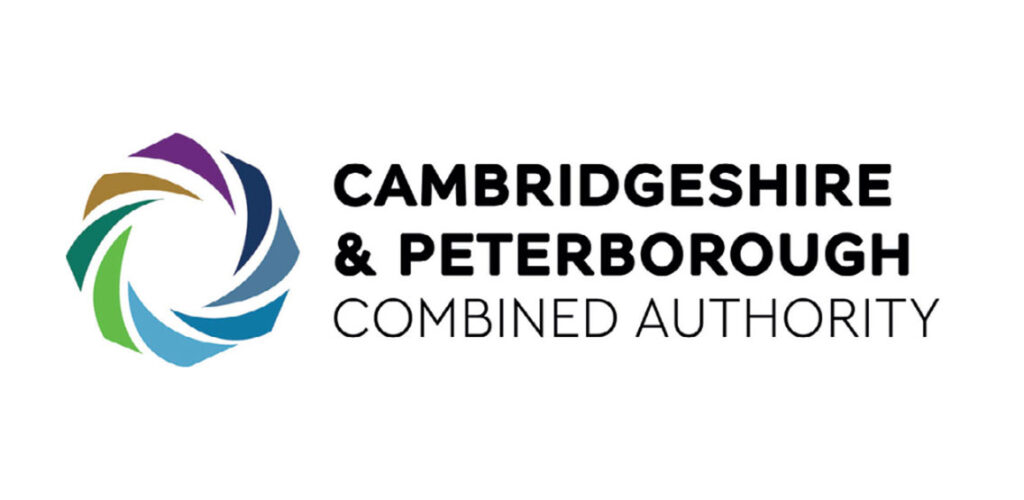Long Range Low Powered Wide Area Networks (LoRaWAN)
Long-range, low-powered wide-area networks (LoRaWAN) are a type of wireless communication that allows information to be carried from a connected device such a sensor.
A LoRa(WAN) network supports long-range communications between low-powered devices which have a long battery life, such as a sensor. They are ideal for Internet of Things applications as the network allows secure data and information to be transmitted from these connected devices about things like air quality or flood warning indicators.
The Connecting Cambridgeshire programme, with funding from Cambridgeshire & Peterborough Combined Authority, is rolling out a LoRa network that will have two elements: a public network called The Things Network – this network will be open for anyone to use – and a separate private network that will available for local authority services and for commercial use by businesses.
Building on the current LoRa network which already exists in the Greater Cambridge area, the new rollout is starting with Ely, Soham and St Neots – but ultimately the aim is to expand across the whole county and ensure the smooth exchange of data with similar networks in neighbouring counties.
How is LoRaWAN different to Wifi and 4G?
Although LoRaWAN is a wireless network like WiFi or 4G, there are some important differences:
- LoRaWAN uses very little power, so battery powered LoRaWAN devices can last years on the same battery this can be up to 15 years depending on the application. With technologies such as 4G or WiFi batteries need replacing much more often.
- Wifi has limited range – a wifi base station may just about cover your home, but you would be out of range just a few metres down the road. LoRaWAN base stations (or gateways) can provide coverage for several kilometres (up to 15km in suburban/rural areas) – so it is easy to cover an entire town.
- There is a trade-off of course: whereas with Wifi or 4G you can stream Netflix and upload photos to Instagram, by comparison LoRaWAN only allows tiny amounts of data, but from thousands of devices. This is perfect for many sensors and actuators that just need to report a temperature, or count people, or turn on an irrigation system.
- The other big difference with our particular LoRaWAN network is cost – the publicly available element of our network is currently free for you to use.
Why LoRa?
- LoRa is easy to deploy and use because of its simple architecture.
- A single gateway is designed to take care of 1,000s of end devices.
- Depending on where the base station is mounted it can cover up to 15km.
- Because its low power batteries can last 10-15 years in any devices connected to the network.
- It is secure by design.
- Connecting Cambridgeshire has already deployed LoRa in Cambridge and South Cambridgeshire in partnership with the University of Cambridge – we are now working to extend the network into the wider county. Norfolk and Suffolk also have extensive LoRa networks, so this will allow devices to move in-between areas and still connect to the network.
What can you use LoRa for?
Sensors can be used to collect information on a range of things including;
- Air pollution
- Water levels and flooding
- Temperature and humidity in the environment or buildings – some councils are using sensors on the road to determine gritting routes
- Bin level sensors which can tell an operative when a bin needs emptying
- Tracking assets
- LoRa is being used in some care homes to prevent falls and monitor activity
- Parking
- Visitor trails and information
We are working on a Flood Sensor Pilot Project with funding from the Cambridgeshire & Peterborough Combined Authority and Huntingdonshire District Council (HDC), working in collaboration with the Flood Risk team at Cambridgeshire County Council, as they are the designated a ‘Lead Local Flood Authority’ Under the Flood and Water Management Act 2010, for HDC who will also be deploying sensors and will be an end user of the data produced.

There are also a number of commercial uses including for agricultural purposes – monitoring moisture content of soil, tracking farm equipment etc.
See how Norfolk and Suffolk are using their network by reading the case studies on the Norfolk & Suffolk Innovation Network website.
Other types of data we can collect but would potentially need to use other types of connectivity are:
- Vehicle, Pedestrian and Cycle counting – we are already using small cameras in Cambridge to collect this data in certain areas to monitor how the city is recovering during this phase of the Covid-19 pandemic – we publish the graphs on Cambridgeshire Insight pages.
Using Data
Data is only of value if you can gather insights or intelligence from it. We can help market towns build dashboards, graphs or other visualisations to understand the data and set up alerts.
LoRa rollout in Cambridgeshire
Our LoRa network rollout supports the Combined Authority’s ambition for Cambridgeshire and Peterborough to be at the leading edge – with a future-facing digital connectivity infrastructure that is well positioned to take full advantage of current and emerging technological advances. The LoRa network will enable businesses, local authorities, educational organisations, and the public, to explore, trial and implement IoT technology within market towns to help the local economy grow.

